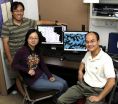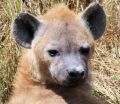(Press-News.org) New research has found that a genetic variant which reduces the chance of contracting diseases such as tuberculosis and leprosy is more prevalent in populations with long histories of urban living.
The research, published in the journal Evolution, shows that in areas with a long history of urban settlements, today's inhabitants are more likely to possess the genetic variant which provides resistance to infection.
In ancient cities, poor sanitation and high population densities would have provided an ideal breeding ground for the spread of disease. Natural selection should mean that humans would have developed resistance to disease in long-standing urbanised populations over time. However, this association has been very difficult to assess - especially in prehistory.
Now, scientists from UCL (University College London) and Royal Holloway have tested the theory by analysing DNA samples from 17 different human populations living across Europe, Asia and Africa. In addition, they searched archaeological and historical literature to find the oldest records of the first city or urban settlement in these regions.
By comparing rates of genetic disease resistance with urban history, they showed that past exposure to pathogens led to disease resistance spreading through populations, with our ancestors passing their resistance to their descendents.
"The results show that the protective variant is found in nearly everyone from the Middle East to India and in parts of Europe where cities have been around for thousands of years" said Professor Mark Thomas from the Department of Genetics, Evolution and Environment at UCL (University College London).
Dr Ian Barnes, from the School of Biological Sciences at Royal Holloway, said: "The method we have employed here makes novel use of historical and archaeological data, as a means to explain the distribution and frequency of a genetic variant, and to identify a source of natural selection.
"This seems to be an elegant example of evolution in action. It flags up the importance of a very recent aspect of our evolution as a species, the development of cities as a selective force. It could also help to explain some of the differences we observe in disease resistance around the world," added Dr Barnes.
"Population density seems to play an important role in shaping so many aspects of our species", said Prof Thomas. "It was a vital factor in our species maintaining the complex skills and culture that distinguish us from other primates. It drove many of the genetic differences we see today between different populations from around the world. And now, it seems, it also influenced how infectious diseases spread in the past and how we evolved to resist those diseases".
INFORMATION:
The research was funded by the Natural Environment Research Council and the Arts and Humanities Research Council (Centre for the Evolution of Cultural Diversity).
Notes for Editors
1. For more information, please contact Prof Mark Thomas on office: +44 (0)20 7679 7418, mobile: +44 (0) 7973 725955, e-mail: m.thomas@ucl.ac.uk, or Dr Ian Barnes on office: +44 (0) 1784 443562, mobile: +44 (0) 7912093181, e-mail: Ian.Barnes@rhul.ac.uk.
2. Alternatively, please contact Clare Ryan in the UCL Media Relations Office on tel: +44 (0)20 7679 9726, mobile: +44 (0)7747 565 056, out of hours +44 (0)7917 271 364, e-mail: clare.ryan@ucl.ac.uk.
3. 'Ancient urbanisation predicts genetic resistance to tuberculosis' is published in the journal Evolution. Journalists can obtain copies of the paper by contacting UCL Media Relations.
4. The study was carried out by researchers from Royal Holloway, University of London, University College London and Oxford University.
About UCL
Founded in 1826, UCL was the first English university established after Oxford and Cambridge, the first to admit students regardless of race, class, religion or gender, and the first to provide systematic teaching of law, architecture and medicine. UCL is the fourth-ranked university in the 2009 THES-QS World University Rankings. UCL alumni include Marie Stopes, Jonathan Dimbleby, Lord Woolf, Alexander Graham Bell, and members of the band Coldplay. UCL currently has over 12,000 undergraduate and 8,000 postgraduate students. Its annual income is over £600 million.
END
In many developing countries, the absence of surface-based air pollution sensors makes it difficult, and in some cases impossible, to get even a rough estimate of the abundance of a subcategory of airborne particles that epidemiologists suspect contributes to millions of premature deaths each year. The problematic particles, called fine particulate matter (PM2.5), are 2.5 micrometers or less in diameter, about a tenth the fraction of human hair. These small particles can get past the body's normal defenses and penetrate deep into the lungs.
To fill in these gaps in surface-based ...
AMARILLO - Wheat streak mosaic virus is the most prevalent disease in the southwestern wheat producing region of the U.S., according to a Texas AgriLife Research scientist.
Dr. Charlie Rush, AgriLife Research plant pathologist in Amarillo, is assembling several teams of scientists to work on the disease from every aspect: vector to diagnosis and mapping to control.
"There are other diseases of concern, but wheat streak mosaic is always found somewhere in this wheat growing region, and every couple of years, we have an epidemic of it," Rush said.
Several issues cause ...
DURHAM, N.C. – While scientists have spent the past 40 years describing the intricate series of events that occur when one mammalian cell divides into two, they still haven't agreed on how the process begins.
There are two seemingly contradictory theories, which now may be reconciled by a third theory being proposed by Duke University bioengineer Lingchong You. These findings could provide insights into the initiation of disease, such as cancer, which is marked by uncontrolled cell proliferation.
During proliferation, the DNA within the nucleus of a cell makes a copy ...
AMES, Iowa – A research team led by Edward Yu of Iowa State University and the Ames Laboratory has discovered the crystal structures of pumps that remove heavy metal toxins from bacteria, making them resistant to antibiotics.
The findings are published in the Sept. 23 issue of the journal Nature.
Yu – an Iowa State associate professor of chemistry, of physics and astronomy, of biochemistry, biophysics and molecular biology and an associate of the U.S. Department of Energy's Ames Laboratory – said the finding gives researchers a better understanding of bacterial resistance ...
MANHATTAN, KAN. -- With the concept of a store-within-a-store growing across the country, a Kansas State University researcher's work shows the increasing importance of brand reputation and its strong role in governing decisions.
Richard McFarland, associate professor of marketing, and four colleagues recently completed "Understanding Governance Decisions in a Partially Integrated Channel: A Contingent Alignment Framework." Their research will be published in the elite Journal of Marketing Research next year.
The research looks at separate companies who entered a store-within-a-store ...
A team from the National Museum of Natural Sciences (CSIC) has analysed the impact of climate change on spotted hyena survival in Europe over 10,000 years ago. These changes played an important role, but the scientists say studies are still needed to look at the influence of human expansion and changes in herbivorous fauna on the definitive extinction of this species across the continent.
"Climate change in the past was not directly responsible for the extinction of the spotted hyena in southern Europe, but it was a factor in its disappearance", Sara Varela, lead author ...
GREENBELT, Md. -- New supercomputer simulations tracking the interactions of thousands of dust grains show what the solar system might look like to alien astronomers searching for planets. The models also provide a glimpse of how this view might have changed as our planetary system matured.
"The planets may be too dim to detect directly, but aliens studying the solar system could easily determine the presence of Neptune -- its gravity carves a little gap in the dust," said Marc Kuchner, an astrophysicist at NASA's Goddard Space Flight Center in Greenbelt, Md. who led ...
"A giant rhino with a ridiculously supersized head."
"Fifteen long, pointed sideways oriented eye horns: one over the nose, one atop each eye, one at the tip of each cheek bone, and ten across the rear margin of the bony frill."
"A horned face: large horn over the nose and short, blunt eye horns that project strongly to the side."
Such phrases have been used to describe two newly discovered species of dinosaurs with looks only a mother could love. Still, they are drawing the attention and inspiring the imagination of scientists and lay people alike.
Announced today ...
COLUMBUS, Ohio – While birds living in urban areas face more predators than do those in rural areas, that doesn't mean urban birds face more danger from nest robbers.
A six-year study conducted in 19 central Ohio forests from 2004 to 2009 found that, as expected, rural areas that had higher numbers of nest predators such as raccoons, domestic cats, and crows, also showed lower rates of nest survival.
But there was no relation between the number of predators and nest survival in more urbanized areas.
Researchers believe that's because nest predators in urban areas ...
WASHINGTON -- A concerted effort to boost research on women's health over the last two decades has lessened the burden of disease and reduced deaths among women due to cardiovascular disease, breast cancer, and cervical cancer, says a new report from the Institute of Medicine. The effort has yielded less but still significant progress in reducing the effects of depression, HIV/AIDS, and osteoporosis on women, added the committee that wrote the report.
However, several health issues important to women have seen little progress, including unintended pregnancy, autoimmune ...


